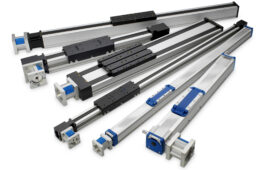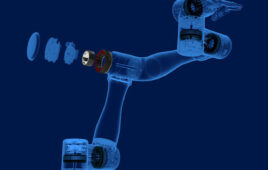 There’s value in searches led by attorneys capable of analyzing results … and guiding inventors before patent-application filings.
There’s value in searches led by attorneys capable of analyzing results … and guiding inventors before patent-application filings.
By George Likourezos • Patent attorney and partner | Carter, DeLuca & Farrell LLP
Technologists and thinkers can have eureka moments at any time: They see a problem and instead of just accepting that problem, they create a solution. Such solutions can be a new product idea or a redesign of an existing product. In other words, an invention is born.
One of the next steps is for the inventor to meet with a patent attorney. Most inventors are indeed eager to get a patent application prepared and filed. However, especially now that all major patent jurisdictions (including the U.S.) award patents to the inventor who is first-to-file, we advise that a patent search be performed at the outset. Here are the five main reasons why it’s important to perform such a search.
1. The Home Depot Test is not realistic
It is not uncommon for an inventor to believe he was the first to think of his new product idea or improvement to an existing product. An inventor may accept anecdotal evidence that if the inventive product is not being sold by Home Depot (or any other brick-and-mortar or online store) — a.k.a. the “Home Depot Test” — he is the first person who ever thought of the new product idea or improvement.
The Home Depot Test should not be relied upon, because only a small percentage of inventions described by issued patents and pending patent applications are manufactured and commercialized. Every week in the U.S., thousands of patents are issued and thousands more patent applications are published. Only a sliver of the inventions described by these patents and patent applications will see the light of day. Therefore, a patent search will more often than not reveal many patents and published patent applications (commonly referred to as prior art references) describing inventions that are similar (or even identical) to the inventor’s invention.
2. Time and cost savings
Patent searches are much less expensive than preparing and filing a patent application only to trigger prosecuting the same in the U.S. Patent and Trademark Office (USPTO) and in foreign patent offices. Therefore, it is better to find out early on from your patent attorney that the patent search revealed one or more similar or identical inventions. Better avoided is learning that same information from a USPTO examiner two to four years later — after having spent time and money preparing and filing a patent application … and possibly having received money from investors … or having spent money manufacturing a product that has nothing proprietary.
3. Analysis of the patent search results
The information gleaned from a patent attorney’s analysis of the patent search results can provide guidance to the inventor for improving or redesigning his invention. In particular, if a patent is identified during the patent search that describes a similar or identical invention, the inventor can improve or redesign his invention in a manner that is non-obvious over the prior inventions.
That is, the further improvement or redesign of the original invention may be patentable over the identified patent or patents, even though the original invention may not be patentable.
For example, assume patents and published patent applications identified during the patent search describe the use of a mechanical gear mechanism to make an adjacent component move in a circular motion.
If the invention is redesigned to include an electromagnetic mechanism to make the adjacent component move in a lateral motion, the USPTO may find the redesigned invention patentable over prior inventions.
4. Gauging the scope of eventual patent claims
The patent search results also enable a patent attorney to gauge how broad the inventor’s patent claims are likely to be. The broader the patent claims, the more likelihood the patent will be found to cover a competing product that was designed to thwart the patent claims.
Conversely, the narrower the patent claims, the less likelihood the patent can be used to stop a competitor or enter into a licensing agreement with the competitor. Therefore, if the latter, the inventor may decide to forgo the preparation and filing of a patent application and think of investing his resources in another invention where broader claims are more likely possible.
5. The prompting of additional inventive features
If the patent search results indicate there are many patents and pending patent applications covering the overall inventive product idea or improvement, an inventor may be able to steer the patent prosecution process to his advantage if he thinks of additional inventive features regarding his invention.
That is, if the patent search indicates the inventive product is known, the inventor can think of additional inventive features to increase the likelihood of being granted a patent. These additional inventive features can be included in the patent application before it is filed. Of course, once the patent application is filed, additional inventive features cannot be added to the patent application.
For more information, visit www.carterdeluca.com.
You may also like:
Filed Under: IoT • IIoT • Internet of things • Industry 4.0, Trends, MORE INDUSTRIES









